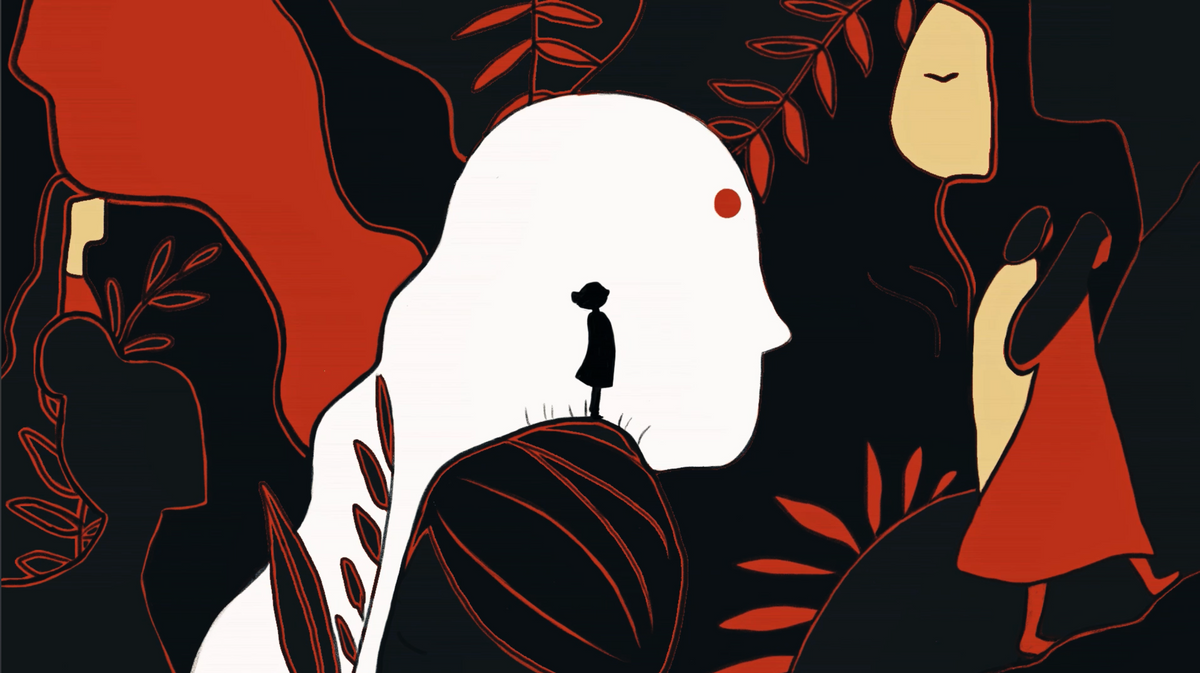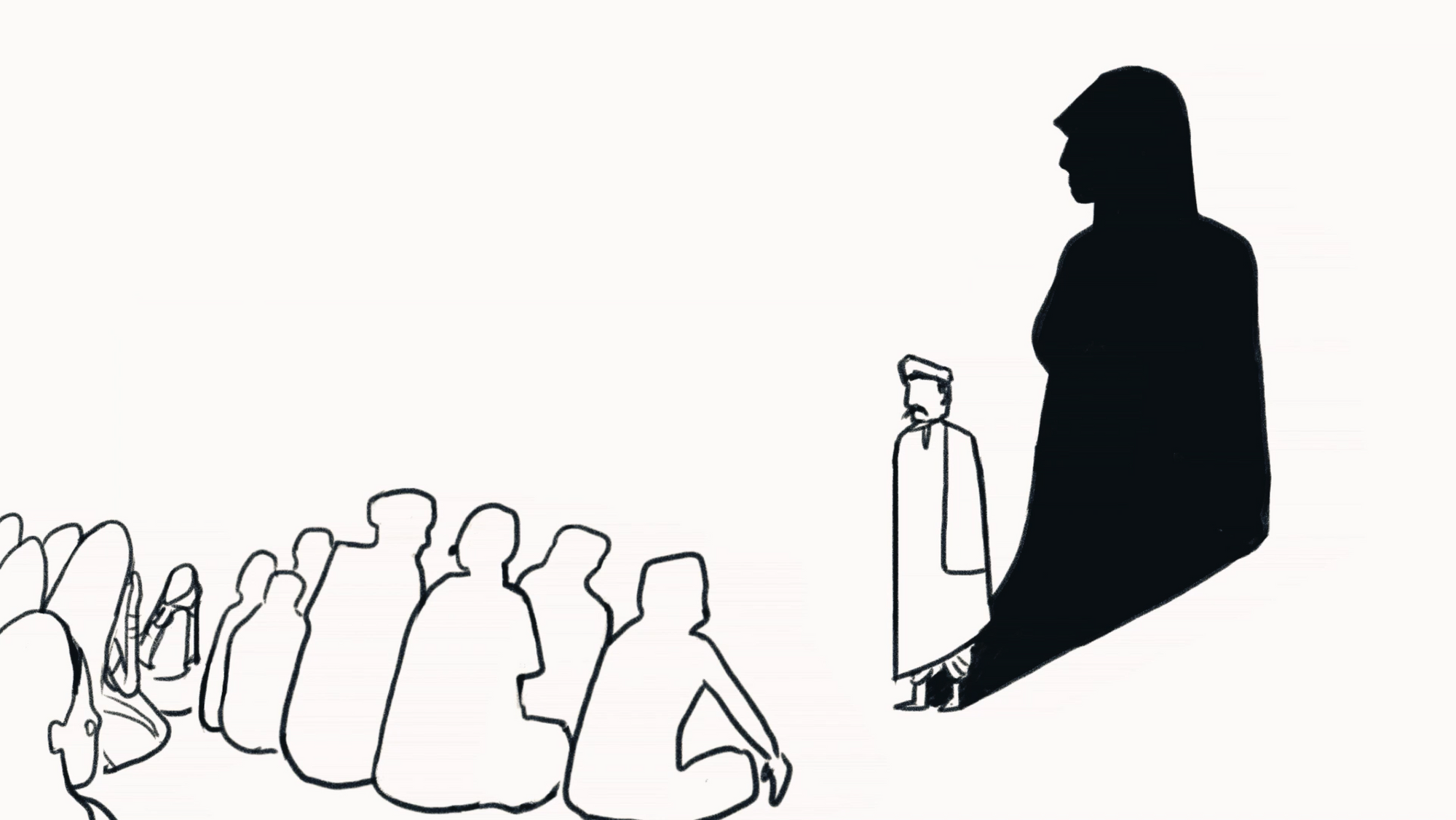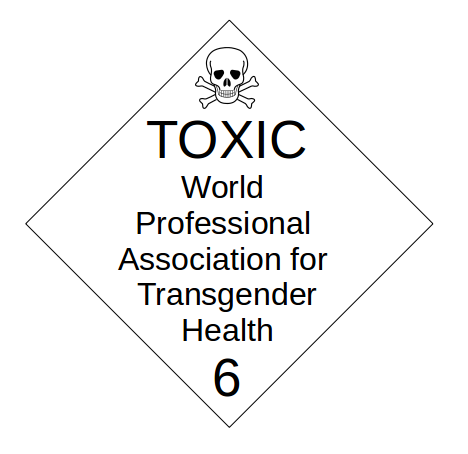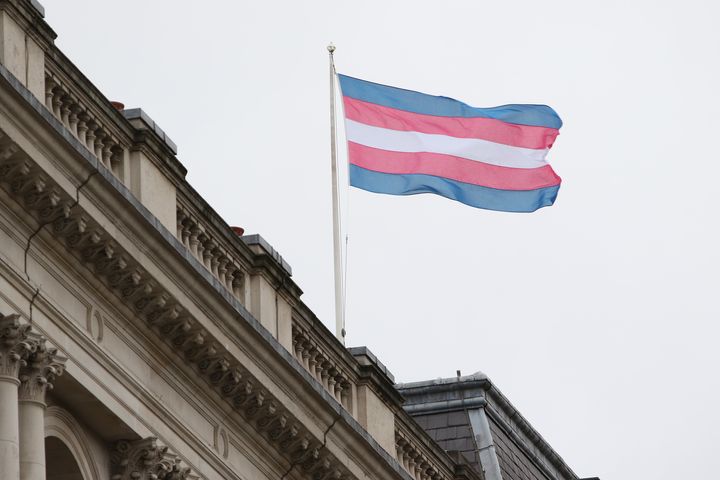How Homophobia in India has Fueled the Rise of Transgenderism
While lesbians and gender-nonconforming women still face stigma and violence, Indian liberals and corporations turn to transition as the answer

About a year ago, I nosedived into the cesspool that is the gender industry to understand it better. I dug myself a proverbial hole, stayed there for almost a year and resurfaced with a film. I hoped it would serve as a response to every useful idiot that ever argued with me about gender in the past.
This whole endeavor was triggered by a bizarre social media experience in 2019 when a bunch of teenagers threatened to punch, rape, and kill me because I tweeted rudimentary biological facts on sexual dimorphism. While their threats seemed funny at first, it hurt when I was piled on by erstwhile friends; some of whom worked with me on projects concerning women’s rights in India. One woman said she was “ashamed to have worked with me" on a campaign to make Emergency Contraceptive Pills available for women over the counter that the State was withholding for “moral” reasons. I suspect the irony was lost on her, for she later dutifully severed all online ties with me.
Soon after the infamous “TERF” epithet was slapped onto me, I encountered a familiar series of cancellations—much like many women who stand against gender overlords do. I have previously written about how my film’s screening was pulled and the spineless cowardice of the Indian liberal media that refused to work with me. While it was harrowing and hard to recuperate from, this “cancellation” was perhaps the best thing that happened to my feminist activism. I could finally speak my truth and no longer had to walk on eggshells within my perennially woke friends circle. The disdain I had towards them for strong-arming me into their cult had found its field day! I spoke up; I said women aren’t men, women don’t have penises, and that women rightfully deserve sex-seggregated spaces. I refused to cower down to their male supremacist taunts once and for all.


I am an Indian woman born into a privileged caste, but not the corresponding class status it is often known to come with. I grew up with an acute understanding of social inequities and my advocacy for women’s sex-based rights stems from my earnest sensitivity to that. Within the Indian social justice circles, I often get bullied by, ironically, other privileged women as a “snobbish brahmin woman” who doesn’t understand how oppression works. Some have even said that my films shouldn’t be screened because of this. The cognitive dissonance exhibited by them is striking when the same group that preaches passing the mic to women from marginalized communities, entirely capitulate to the demands of men over identity politics. Caste is abhorrent, no doubt, but should Sex not be a protected class too?
Homophobia in India and Section 377
India is a homophobic country that punished homosexuals by modelling its archaic sodomy law based on the buggary Act of 1533. It wasn’t until 2018 that Section 377 was decriminalized. The judgement passed by the Supreme Court of India was just the first leg of the long-drawn battle for social legitimacy by the community. Issues such as same sex marriage, inheritance of property, and civil rights are yet to receive legal sanction. Gay men and lesbian women still can’t marry in India because the Special Marriage Act defines two parties as “Male” and “Female.” Despite the fierce legal advocacy under the leadership of Arundhati Katju, Menaka Guruswamy (lesbians themselves), and numerous activists, the Central Government opposes same-sex marriage as it is “not comparable with Indian family unit concept.”
A 2013 documentary made by an Indian filmmaker Debalina Majumder titled: “And The Unclaimed,” demonstrates the apathy of Indian society. In February 2011, two lovers killed themselves and their bodies were retrieved from the fields of Nandigram in the State of West Bengal. The bodies of these women, Swapna and Sucheta, remained unclaimed in a morgue and faced the same plight as all such bodies—burnt together on a pile with nobody to mourn. This is certainly not the first instance of suicide and, despite decriminalization of homosexuality, it surely isn’t going to be the last. The story of Anjana Hareesh, a bisexual woman who killed herself in May of 2020, proves the same. Anjana was forcibly taken by her family to two “de-addiction centers” and put on heavy medication by these centers.
Rape as conversion therapy is perhaps the most oft practiced anti-gay ritual in India. In the case of Sucheta this was true. Being unable to bear it, Swapna (who was the only earning member of the family) and Sucheta wrote a long and poignant suicide note and consumed poison.
The subjects in the documentary also talk about how gender non-conforming women become the prime recipients of communal backlash; “If they see a girl with short hair like boys, they strip her naked and make her walk in public so that people can see her genitals,” an activist said in Debalina’s film. Her documentary is also an outlier in the stark homophobia lesbians endure in India, especially in the rural areas where the stakes to perform femininity are higher. Given that marital rape in India is still not criminalized, such “corrective measures” that dump lesbian women into a marriage with a man, and raped into having his child, will find no sympathy in the court of law.
“If they see a girl with short hair like boys, they strip her naked and make her walk in public so that people can see her genitals.”
The legal system in India—as it is in other parts of the world—is premised on a bundle of rights that recognizes our personhood. Transfer of property, life insurance, procurement of lease, opening a joint bank account, etc., are all premised on blood relationships, achieved via the family one is born into, and spousal relationships.
Menaka Guruswamy eloquently juxtaposes the relevance of gay marriage rights and the cultural significance in a speech to the Oxford Union: “India is a marriage country,” she says, “we sanctify only one kind of relationship and that is marriage. We are a 1.7 billion people’s society who are deeply enmeshed in a social fabric; and one of the biggest determinants of that fabric is marriage.” While she also challenges that a marriage-based social fabric is far from ideal, she says, “the reality of our country is that gay people and straight people and left-handed people and right-handed people all aspire one thing in common: to find love. They also aspire to have the law and society recognise, protect, affirm and give legitimacy to that love. One way of doing that is marriage.”
Debalina’s next film that talked about gay marriage was censored as an “adult” film by India’s film division. Speaking to Women Making Films, she said, “I am not in favour of marriage as a logical culmination for romantic partnerships, but I wonder how a same-sex marriage proposal sounds to friends, families, state representatives, and activists.” While talking about her views of the film being censored, she said, “The fact that making a film on same-sex marriages can attract censorship in the form of restricted audience viewing has been a painful experience. This only shows that even today we are not in a position to accept diversity. There is an attempt to weed out differences in the name of producing a sanitised, ordered and homogenous society.”
Until Arundhati and Menaka’s upcoming “marriage project” takes off, I want to stress the dire need for measures to safeguard Indian girls and women, and how the present political climate has steered in the opposite direction, once again, catering to the feelings and whims of men.
Pinning the T on to the LGB movement
When I started getting threats on social media, it was hard to not spot similarities in the language of trolls in India with that of the US and UK. The worldwide agenda has been simple all along: silence women for not pandering to the woke logic. In a lot of Indian schools, universities, and colleges, non-profit organisations have waltzed in to educate students on “gender sensitivity.” These trainings don’t educate people on the inequities of our society, the challenges women face, or even, what female sexuality is. This whole endeavor has been about how biological sex is invalid; people can identify as whoever they want, and transgender children must be loved, supported, and accepted (as the opposite sex).
“Gender,” a word I have come to despise with every fiber of my being, is often mistaken for “sex” in every legal document in India. A country that still squirms at the usage of the word “sex” to mean the biological term, replaced it with “gender” and thus created an avalanche of confusion. In fact, this ambiguity suits the lifestyle of these impressionable teens who beg for social-media validation. Sasha Ayad, a US-based Licensed Professional Counselor says, “According to the major clinics and the medical systems which are really pushing gender identity theory, it's a person's internal sense of self, and how they fit into the world from the perspective of gender. But they never define gender because we're told it means something different to every person.”
None of these “gender sensitivity” training define “gender,” either, nor do they make a case for normalizing gender nonconformity. Given that there is a market for transgenderism and gender fluidity, the square focus of all these trainings is about the “woke” cliches that further shove these children into hypersexualized feminine/toxic masculine boxes.
“Hi I am Mehek and my pronouns are she/her. When I was a child they said I was [a] boy, but inside I was a girl crushing on Brad from Troy!”
In a video made by an Indian stand up comedian Abish Mathew, called “Gender Identity | Out Of Syllabus,” a pink bearded teacher by the name Angel announces his pronouns as “they and them.” After peddling some very bizarre assumptions, a “transwoman” character, Mehek, is introduced. Mehek says, “Hi I am Mehek and my pronouns are she/her. When I was a child they said I was [a] boy, but inside I was a girl crushing on Brad from Troy!”
I wonder why Mehek couldn’t just be a boy and crush on Brad from Troy without wanting to be a she/her? What does it imply? That boys can not crush on men? That only a girl could crush on a Brad from Troy, and not, say, Rosamund Pike or Tessa Thompson? How many times have radical feminists called out this homophobia in the trans movement, only to be dished out death threats?
And if this is what they want to teach young and impressionable LGB kids in Indian schools, I fear how much of homophobia they would internalize before even understanding sexuality or sexual orientation.
Corporations and their CSR Funds
Many corporations have begun to spend their CSR (corporate social responsibility) funding (previously donated to charities or orphanages) on promoting gender identity ideology. After all, public perception about a brand can expedite mass consumerism and loyalty.
Godrej, a Multinational conglomerate company founded in 1897, runs a project called IndiaCultureLab. With about eight thousand subscribers on YouTube, IndiaCultureLab claims to be “a fluid experimental space which cross pollinates ideas and people to explore what it means to be Indian and modern.” The channel features a talk made by a trans-identified male who accuses “TERFS” of oppressing transgender people.
The critical work of Jennifer Bilek about the direct relationships between multinational conglomerates and the medical industrial complex is crucial. While it might seem like a conspiracy theory to some, the number of organisations willing to accede to the demands of big pharma, speak for itself.
Many young girls who identify as “gender fluid” speak on the IndiaCultureLab channel about how we are not “woke” enough to understand their four states of being: man, female, both, neither. Young women like Durga Gawde, who think participating in sports brings out their masculine side and having long hair, the feminine side, have been thoroughly indoctrinated by the gender industry.
"We are not privileged for maintaining an understanding of the basis of our oppression; you are privileged if you believe you can escape it."
The videos reminds me of the 2019 personal essay by M. K. Fain (4W founder and editor), “Non-Binary Is the New 'Not Like Other Girls,' and it’s Deeply Rooted in Misogyny.”
“The uncomfortable truth is this: saying you are “not like other girls” is not an identity, it’s misogyny. Non-binary-identifying women like to claim an extra degree of oppression over women who they call “cis,” a term which implies that certain women are complicit in their own oppression. But we are not privileged for maintaining an understanding of the basis of our oppression; you are privileged if you believe you can escape it,” the article concludes.

India and Radical Trans Rights Activism
There appears to be a steep rise in the cases of ROGD (Rapid-Onset Gender Dysphoria) in India. While there is a dearth of research on the issue, conversation with therapists from the US and UK backs this up. They tell me about desperate Indian parents reaching out to find someone to help their teenager—the kind of help they can’t find in India because, for one, we have the most despicable mental health service that is nascent at best, and most Indian therapists seem to want to instantly “affirm.”
Many Indian mental health service providers advocate for rights of minorities but, in the case of gender, they espouse the same logic as the West in treating transgender as if it was the same as homosexuality. Many advocates campaign against “conversion therapy” towards “LGBTQI” individuals without realizing that the “T” is a part of the problem. Enthusiastic professionals offer helpful advice about HRT (Hormone Replacement Therapy) and SRS (Sex Reassignment Surgeries) by using vocabulary like “assigned sex,” a factitious phrase that must be abolished from clinical jargon. Some offer trainings on Queer Affirmative Counselling Practice, which focuses on the oppression faced by the “LGBTQI” community (which may be true, but does not challenge young women who want to be boys with holistic mental health support, or understand the reason for such distress in the first place). The futility and ambiguity of the characteristics as described by the DSM (Diagnostic and Statistical Model) only makes matters worse. These Indian websites also engage in rampant and irresponsible fear mongering with unsubstantiated numbers of suicidal ideation.
The government of India submitted figures to the Supreme Court in 2012 which claim there were about 2.5 million gay people recorded in India. These figures are based on those individuals who have self-declared their orientation to the Ministry of Health. While gay marriage is still illegal, the number of lesbians opting for SRS is on a steady increase with no speculation over the reasons. Meanwhile, an active cheerleading campaign for transgender identity spreads through the gay community.
“Had same-sex marriage been allowed in India I would have not undergone sex-change.”
A female constable from CISF (The Central Industrial Security Force) was recently officially recognized to be a “male” constable. Hindustan Times reports that she “underwent surgery to change her sex and beat laws that don’t allow gay marriages in India.” After an alleged four years of bureaucratic indecisiveness and lack of precedence, she was put through multiple fitness and “gender” tests. She took a loan for a whopping 10 lakhs INR (about $14,000 USD) for surgery and painful (lifelong) hormonal injections. “Had same-sex marriage been allowed in India I would have not undergone sex-change,” said the constable who hails from a small town in Bihar, and had joined CISF in 2008. Spending close to 7 lakhs INR (over $9,000 USD), a woman of a remote village in Orissa underwent a sex change surgery to marry her lesbian partner. On February 4, 2020 the couple married as “heterosexuals.”
Indian social media is also filled with endocrinologists and activist surgeons offering competitive prices and packages for the multiple procedures. One of them even claims transition is a great way to be free from menstrual pain forever, while underplaying the life threatening consequences of these irreversible procedures. The Indian government recently even made sex reassignment surgery free of cost in government hospitals in every State. This came shortly after the trans bill was passed with a complete mixup of the words “sex” and “gender.” There is now an active lobby in India wanting to “self identify” as the opposite sex with absolutely no surgical changes to the body.
Conflation of Hijras (Indian Eunuchs) and Intersex as Trans
The same group of activists often borrow the cultural phenomenon of Hijras, and the intersex conditions (differences of sex development) for the advancement of the trans agenda, and by doing so, potentially dampen the strides made by intersex people. Claire Graham, a leading intersex advocate based in the UK, who has written extensively on the subject, spoke in my film.
“I think transgender people often feel that if they were intersex (if they did have a DSD) that will explain how they feel. So a lot of trans people think that at some point. And they have this idea about “intersex brains,” so they think that they have the brain of the opposite sex. Because of this misconception of intersex being a “mixture of the two” it must mean that being trans is somehow another form of intersex. It isn't, because your brain isn't your reproductive tract,” Graham said.
In an excellent article for Feminist Current, L Beatrice, a South Indian lawyer busted the many myths used by the West (and woke circles in India that parrot them) that wrongly cite the historic existence of transgenders by claiming Hijras as trans.
“The Hijra see themselves as ‘neither man nor woman,’” she writes, “but have been described or classed in wildly different ways by those who study mythology and history of the region, anthropology, religious history, and cultural studies, and use the term “Hijra” to refer to many different groups, including eunuchs, transvestites, people with ambiguous genitalia, or sexually “ambivalent” men who dress up as women. While some Hijras are born with intersex conditions, this is rare. Most are men who undergo voluntary castration and penectomy and consider themselves to be sexually impotent.”
While this cultural dubiety of hijras and ceaseless conflation of sex/gender have worked in their favor, trans rights activists are now coming after female-only spaces—a move I thought we in India had at least five years to fight. But these eunuchs aren’t female, nor are the modern-day trans-identifying males.
“The Hijra see themselves as neither man nor woman.”
On January 5, 2021, the Bombay High Court allowed a trans-identified male to contest village panchayat (town council) polls as “female” from a ward reserved for women, saying that such persons have the right to a “self perceived gender identity.” These women-only election slots are allotted on rotational quotas as a form of affirmative action that would benefit the women of a constituency and encourage female participation in politics. These quotas are a temporary shock that will shift normative perceptions (albeit extremely slowly) and might potentially encourage female candidates to compete against men. While caste-based affirmative action has seen some success where members of marginalized caste have won in the general category, there is almost no similar precedent for women competing (or winning) against a man. Also, it is an open secret that male members of the family would often use the female quota as a foot in the door and encourage the women in the house to compete. While she may be the face of the ward, the men run the politics and make the decisions while the woman is merely a puppet. Once the quota is lifted from a constituency, the male members contest per usual, and women are sent back to the kitchens. Tamil poet and politician Rajathi Salma has talked about this system extensively, taking from her own life experiences.
With this landscape, it is maddening to see a man, merely by virtue of his feelings, winning an election in a female-only ward. This is an affront to the existence of every female human in this country. Gender ideology is a system that embodies a philosophy that is antithetical to every menial stride we have made in the past, a system that disadvantages women even within a system designed for women—an apathy that should shock the world. Yet, provisions are being made as I write this for male access to female toilets and other safe spaces for women.
Few weeks ago, on March 15th, the Kerala High Court allowed a trans identified male to join NCC (National Cadet Corps) and called for changes in enrollment criteria. The single bench of Justice Anu Sivaraman (a woman) said the Transgender Persons (Protection of Rights) Act, 2019, recognizes a transgender person's right to a self-perceived gender identity. "In view of the specific provisions of the 2019 act, a transgender person has the right to be recognised not only as a transgender but also a right to self-perceived gender, i.e. the female gender," she said.
A newly formed online community for lesbians, gays and bisexuals, the Indian wing of the LGB Alliance, tweeted, “the Central Government Standing Counsel (CGSC) had submitted that the training modules & other curriculum provided to the sexed NCC divisions were different & it was the prerogative of the Centre to constitute a new transgender division.” However, the State claimed that such a practice harmed the rights of transgender citizens and chose to override it. The Union Public Service Commission that conducts national level competitive exams for the National Defense Academy and Naval Academy is riddled with hypocrisy. According to a clause, female and "transgender" candidates are not allowed to take the NDA exam. “Trans women'' whose legal “gender” is still male are eligible. Trans men, however, are neither allowed on the basis of their sex or their "gender identity."
“They have a network of hijra mandis where a newly castrated eunuch is auctioned to the highest bidder.”
India is also plagued by fetishistic men who would exploit the vulnerability of children for their sexual motives. Earlier this year, a 13-year-old boy in Delhi was forced to undergo sex change surgery and raped multiple times. The accused repeatedly abused the boy and “forced him to beg at traffic signals as a transgender,” according to the Delhi Commission for Women.
Khairati Lai Bhola of All India Hijra Kalyan Sabha (AIHKS), formed in 1984 to protect the rights of the community, said, “Young and addicted boys are abducted and then introduced to homosexuality by the agents of eunuch’s gurus. Castrations are clandestinely forced on them and ironically, very few people gather the courage to retaliate.” In an extremely hierarchical model, Bhola says the hijra mafia that controls the castrations operates secretly throughout the country. “They have a network of hijra mandis where a newly castrated eunuch is auctioned to the highest bidder. The auction is conducted with claps - a single clap means Rs 1,000. Fair, clean-limbed boys who can earn more, attract highest bids. Victims are threatened with death if they break silence,” reveals Bhola.
Misguided Motivation of Trans Rights Activism
The majority of trans rights advocacy in India today stems from the vantage points of caste, poverty, and illiteracy—a way of alleviating the members of the marginalized communities from their shackles. But other “civil rights movements” don’t entirely destroy the hard-fought rights of another community for their own gain.
The gullibility of the marginalized communities in India is squeezed dry by the corporations. They get away with being called “intersectional,” wearing a veneer of social conscience, but are only after the money. To raise this as a female sex-based rights issue, one risks being called a savarna (a blanket term for members of the upper caste) bigot who allegedly wants to keep the abhorrent social practice of caste alive.
I don’t, nor am I “transphobic.” The only thing I am “phobic” about is the endless derivative forms of misogyny that affect women—all women. The current trans wave is an industry-driven gaslighting propaganda that shames women for not “choosing” to “empower” themselves out of being oppressed on the basis of their sex. I will not call this empowerment or intersectionality or all the things that it is not. This is misogyny—a categorical and dangerous form of misogyny—and I object to it.
“The gullibility of the marginalized communities in India is squeezed dry by the corporations.”
A developing country riddled with abject poverty, illiteracy, despicable healthcare, and a fascist government, makes for a dangerous society for women. Add to this the evils of the caste system, religious extremism, and racial prejudices. It feels absurd and defeatist to even summon the courage to stand against it. This industry of hate that gaslights girls into turning against themselves infuriates me. The thought of an entire generation of kids turning around and asking us, “Where were you? Why didn’t you do anything?” keeps me up at night.
There is no scope for feelings in this debate. Sex is immutable; and no matter how much one advocates against it, it doesn’t alter the facts. I made “Dysphoric” to lay those facts down even as genderists are actively trying to conceal it. My film puts women and girls above everything else, and encourages them to appreciate their bodies without the need for any alterations. I have taught myself to be proud of my sex class against all odds; I derive my strength and determination from the achievements of other women around the world. Despite all the abuse and misogyny I experienced growing up, there is so much to be proud about for being female! If I could go back in time, I would hug my younger self—who wanted to be a boy—and tell her exactly that.
Screen Vaishnavi's latest documentary, "Dysphoric: Fleeing Womanhood like a House on Fire," on Youtube:

Do you want to bring the "gender madness" to an end? Help us write about it! 4W is able to pay our all-female staff and writers thanks to the generous support of our paid monthly subscribers.
Enter your email below to sign in or become a 4W member and join the conversation.
(Already did this? Try refreshing the page!)





Comments